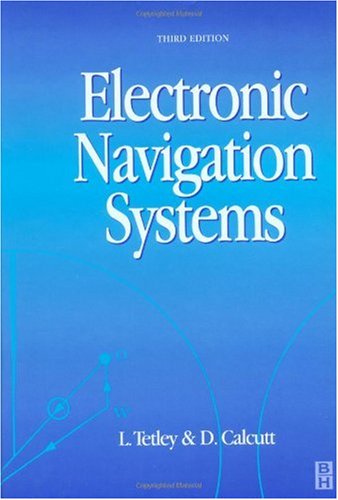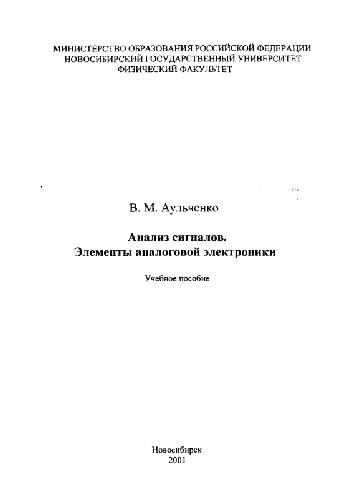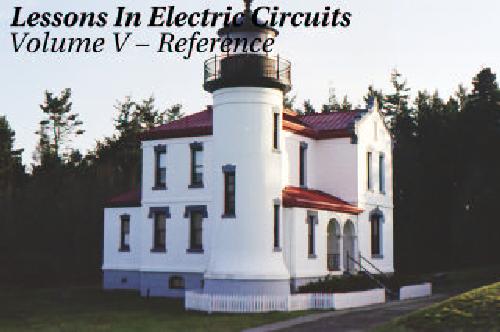Laurie Tetley I.Eng F.I.E.I.E., David Calcutt0750651385, 9780750651387
Table of contents :
Contents……Page 5
Preface……Page 9
Acknowledgements……Page 11
1.2 Maritime navigation systems and their frequencies……Page 13
1.3 Radio wave radiation……Page 14
1.4 Frequency, wavelength and velocity……Page 16
1.5.1 Spectrum management……Page 17
1.6.1 VLF (very low frequency) band……Page 18
1.6.6 UHF (ultra high frequency) band……Page 19
1.7.1 Surface wave propagation……Page 20
1.7.2 Sky wave propagation……Page 22
1.7.3 Space wave propagation……Page 24
1.8.3 Frequency selective fading……Page 25
1.9 Basic antenna theory……Page 26
1.9.1 Half-wavelength antenna……Page 27
1.9.3 Antenna radiation patterns……Page 29
1.9.5 Ground effects……Page 30
1.10 Glossary……Page 31
1.11 Summary……Page 32
1.12 Revision questions……Page 33
2.2 The characteristics of sound in seawater……Page 34
2.2.1 Attenuation and choice of frequency……Page 35
2.2.2 Salinity, pressure and the velocity of the acoustic wave……Page 36
2.2.3 Noise……Page 37
2.3.1 Electrostrictive transducers……Page 39
2.3.3 Magnetostrictive transducers……Page 41
2.4 Depth sounding principles……Page 43
2.4.1 Continuous wave/pulse system……Page 44
2.4.2 Transmission beamwidth……Page 45
2.5.1 Description……Page 47
2.7 A microcomputer echo sounding system……Page 50
2.8 Glossary……Page 53
2.9 Summary……Page 55
2.10 Revision questions……Page 56
3.2 Speed measurement using water pressure……Page 57
3.2.1 A pressure tube speed logging system……Page 58
3.3 Speed measurement using electromagnetic induction……Page 64
3.3.1 A practical electromagnetic speed logging system……Page 67
3.4 Speed measurement using acoustic correlation techniques……Page 69
3.4.1 System description……Page 70
3.5 The Doppler Principle……Page 72
3.6 Principles of speed measurement using the Doppler effect……Page 75
3.6.1 Vessel motion during turn manoeuvres……Page 78
3.6.2 Choice of frequency/transducer……Page 81
3.6.3 Choice of transmission mode……Page 82
3.6.4 Environmental factors affecting the accuracy of speed logs……Page 83
3.7.1 The Sperry SRD-500 Dual Axis Doppler Speed Log System……Page 84
3.7.2 The Furono Doppler Sonar DS-50 System……Page 94
3.9 Summary……Page 97
3.10 Revision questions……Page 98
4.1 Introduction……Page 100
4.2.1 Loran lines of position (LOPs)……Page 101
4.3 Basics of the Loran-C System……Page 105
4.3.1 Pulse groups……Page 108
4.3.3 Transmission of Loran-C pulses……Page 110
4.3.6 Blink……Page 111
4.3.8 Cycle matching……Page 113
4.4 Loran-C charts……Page 114
4.5 Position fixing using the Loran-C System……Page 119
4.6 Loran-C coverage……Page 124
4.7 Loran-C receivers……Page 127
4.7.1 Station selection……Page 131
4.7.2 Normal operation……Page 133
Secondary blink…….Page 134
Settling alarm…….Page 135
Mode 4 stage…….Page 136
4.7.3 Circuit description……Page 137
4.7.4 Specification of the LC-90 Mark-II Receiver……Page 147
4.8 Glossary……Page 149
4.9 Summary……Page 151
4.10 Revision questions……Page 152
5.2 Basic satellite theory……Page 155
5.2.1 Kepler’s Laws……Page 156
5.2.2 Orbital velocity……Page 157
5.2.3 Orbital period……Page 158
5.3.1 The space segment……Page 159
5.3.2 The control segment……Page 160
5.4 The position fix……Page 166
5.6 Satellite pass predictions……Page 169
5.7 System errors……Page 170
5.8 Differential GPS (DGPS)……Page 174
5.9 GPS antenna systems……Page 177
5.10 GPS receiver designation……Page 178
5.11.1 SV selection and acquisition……Page 180
5.11.2 Autocorrelation of random waveforms……Page 181
5.12.1 Trimble GPS receiver specifications……Page 183
5.12.2 Garmin GPS receiver specifications……Page 189
5.13 GPS on the web……Page 194
5.14.4 Position fixing……Page 195
5.14.5 User equipment……Page 196
5.16 Glossary……Page 197
5.17 Summary……Page 198
5.18 Revision questions……Page 199
6.1.3 The International Electrotechnical Commission (IEC)……Page 201
6.2 Design criteria……Page 202
6.3 Standards……Page 205
6.4.2 Scope of rule requirements……Page 206
6.5 Class notations……Page 207
6.6.1 Equipment carriage requirements……Page 208
6.6.4 Man/machine interface……Page 209
6.8.1 Operational safety manual……Page 210
6.8.2 Contingency and emergency manual……Page 212
6.10.1 Voyager by Furuno Electric Co. Ltd……Page 213
6.10.2 NINAS 9000 by Kelvin Hughes……Page 219
8.2.3 Movement over the earth’s surface……Page 0
6.11 Glossary……Page 232
6.12 Summary……Page 234
6.13 Revision questions……Page 235
7.1 Introduction……Page 236
7.1.1 Raster data……Page 237
7.1.2 Vector data……Page 238
7.2.1 Privately produced vector charts……Page 239
7.2.2 Official raster chart……Page 240
7.2.3 Electronic navigational charts (ENC)……Page 242
7.3.1 Electronic Chart Display and Information System (ECDIS)……Page 246
7.3.2 Raster Chart Display System (RCDS)……Page 249
7.3.3 Dual fuel systems……Page 250
7.4 Chart accuracy……Page 251
7.5 Updating electronic charts……Page 254
7.6 Automatic Identification System (AIS)……Page 255
7.7 Navmaster Electronic Navigation System……Page 261
7.7.1 Installing charts……Page 266
7.7.2 Using Navmaster……Page 267
7.8 Glossary……Page 271
7.9 Summary……Page 274
7.10 Revision questions……Page 275
8.2 Gyroscopic principles……Page 276
8.2.1 Precession……Page 278
8.2.2 The free gyroscope in a terrestrial plane……Page 279
8.4 The north-seeking gyro……Page 283
8.4.1 Bottom-heavy control……Page 284
8.4.3 Top-heavy control……Page 285
8.5 A practical gyrocompass……Page 287
8.5.1 The amount of tilt remaining on a settled gyro……Page 292
8.7 Compass errors……Page 293
8.7.2 Dynamic errors……Page 294
8.7.3 Use of vectors in calculating errors……Page 298
8.8 Top-heavy control master compass……Page 299
8.8.2 The movable element……Page 300
8.8.5 Azimuth follow-up system……Page 301
8.9 A digital controlled top-heavy gyrocompass system……Page 304
8.9.1 Control panel……Page 305
8.9.2 System description……Page 306
8.10 A bottom-heavy control gyrocompass……Page 311
8.10.3 Temperature compensation……Page 316
8.11 Starting a gyrocompass……Page 318
8.12.1 Stepper systems……Page 319
8.12.2 Synchro systems……Page 321
8.13.1 Construction……Page 322
8.13.2 Practical flux gate systems……Page 326
8.13.3 Dual axis magnetometer magnetic compass……Page 327
8.14 Glossary……Page 329
8.15 Summary……Page 330
8.16 Revision questions……Page 331
9.2 Automatic steering principles……Page 332
9.2.2 Derivative control……Page 334
9.3 A basic autopilot system……Page 336
9.4.1 Permanent helm……Page 338
9.5 Deadband……Page 339
9.5.1 Overshoot……Page 340
9.6 Phantom rudder……Page 341
9.7 The adaptive autopilot……Page 342
9.7.2 Open sea course keeping……Page 344
9.8 An adaptive digital steering control system……Page 345
9.8.2 System description……Page 348
9.8.3 NMEA 0183 interface format……Page 352
9.8.4 Troubleshooting……Page 353
9.10 Summary……Page 356
9.11 Revision questions……Page 357
10.2 Radio waves……Page 358
10.3.1 A dipole antenna……Page 359
10.3.2 A loop antenna……Page 360
10.4 A fixed loop antenna system……Page 361
10.4.1 The Adcock antenna……Page 364
10.5.1 Quadrantal error……Page 367
10.5.3 Polarization error or night effect……Page 368
10.5.4 Vertical effect……Page 369
10.6 RDF receiving equipment……Page 370
10.6.1 An automatic system using a servomotor……Page 371
10.6.2. A computer-controlled RDF system……Page 373
10.6.3 VHF scanning RDF equipment……Page 377
10.7 Glossary……Page 379
10.9 Revision questions……Page 380
11.2.1 Carriage requirements……Page 381
11.2.2 Digital Selective Calling (DSC)……Page 383
11.2.3 The space segment……Page 387
11.3.2 System parameters……Page 392
11.3.3 Signalling codes……Page 395
11.3.5 Signal characteristics……Page 396
11.3.6 Messages……Page 398
11.5 Summary……Page 400
11.6 Revision questions……Page 401
Appendices……Page 403
Data bus…….Page 405
Control bus…….Page 406
Memory devices……Page 407
Memory organization……Page 408
Local Area Networks (LANs)……Page 410
Software……Page 411
AND gate……Page 413
Bus……Page 414
Demultiplexer……Page 415
Interrupt masking masking……Page 416
Program……Page 417
VDU……Page 418
Serial communication……Page 419
RS-232 Serial Interface……Page 420
RS-422……Page 422
RS-485……Page 423
NMEA 0183……Page 424
NMEA 2000……Page 427
LORAN-C……Page 428
Contact……Page 429
Index……Page 431







Reviews
There are no reviews yet.